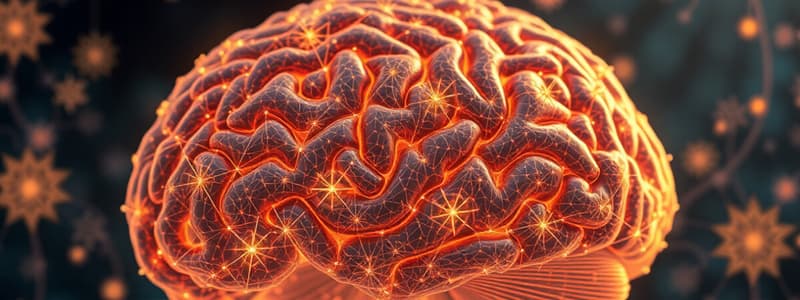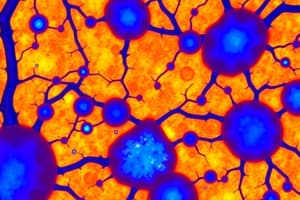Podcast
Questions and Answers
What did Camillo Golgi develop that significantly advanced the study of nerve cells?
What did Camillo Golgi develop that significantly advanced the study of nerve cells?
- A theory about the interconnectedness of all nerve cells.
- A new type of microscope with enhanced magnification.
- A method for culturing nerve cells in a laboratory setting.
- A tissue-staining technique using silver nitrate. (correct)
Which of the following statements accurately describes Golgi's 'reticular theory'?
Which of the following statements accurately describes Golgi's 'reticular theory'?
- It was later confirmed by Cajal's research.
- It focused on the individual, separate nature of neurons.
- It was immediately accepted by the scientific community.
- It was a subject of disagreement between Golgi and Cajal. (correct)
How did Cajal contribute to the understanding of the brain and nervous system?
How did Cajal contribute to the understanding of the brain and nervous system?
- He created detailed anatomical drawings illustrating the nervous system structure. (correct)
- He primarily focused on chemical processes within the brain.
- He developed a new staining technique superior to Golgi's method.
- He invented a new way to grow artificial brain tissue in the lab.
What is the significance of the quote by Santiago Ramón y Cajal?
What is the significance of the quote by Santiago Ramón y Cajal?
What was the relationship between Golgi and Cajal?
What was the relationship between Golgi and Cajal?
Flashcards
Camillo Golgi
Camillo Golgi
An Italian doctor who invented a tissue-staining technique for studying nerve cells.
Tissue-staining technique
Tissue-staining technique
A method developed by Golgi to clarify the structure of nerve cells under a microscope.
Reticular theory
Reticular theory
Golgi's proposal that the nervous system is a continuous network of interconnected cells.
Santiago Ramón y Cajal
Santiago Ramón y Cajal
Signup and view all the flashcards
Nobel Prize in Physiology
Nobel Prize in Physiology
Signup and view all the flashcards
Study Notes
Brain Structure and Mystery
- The structure of the brain is a mystery, which reflects the mystery of the universe
- Camillo Golgi, an Italian doctor, invented a tissue staining technique to study the nervous system
- Golgi (1843-1926) wanted to improve the clarity of nerve cells under the microscope
- In 1873, Golgi discovered a method to make nerve cells appear black with silver nitrate
- Santiago Ramon y Cajal improved Golgi's method
- Despite evidence to the contrary, Golgi clung to the reticular theory
- Cajal's detailed drawings of the brain's structure were a powerful tool for scientific observations
Studying That Suits You
Use AI to generate personalized quizzes and flashcards to suit your learning preferences.




